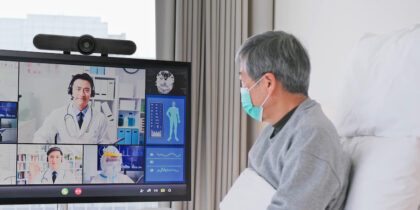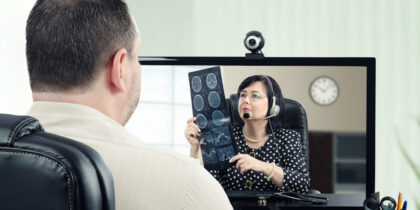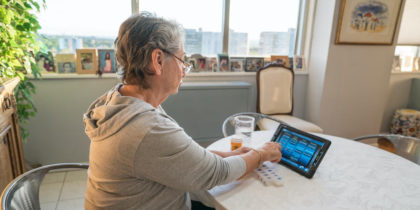Once upon a time, doctors made house calls. With fewer patients and time constraints, they could learn about people’s lives, families and medical histories, and then deliver truly personalized care. But for the past 50 years, most patients have only had two ways to interact with medical providers: Trek to the hospital or physician’s office, or leave a message and wait for a response.
Mobile healthcare technology is changing all that. Innovative healthcare providers are using the same smartphones, tablets and wearables that consumers already love to deliver connected care that extends doctor/patient interactions beyond the consultation room all the way to the home.
With wearable medical devices for at-home monitoring and diagnostics, mobile-accessible medical records for more efficient home healthcare, and virtual tools that promote wellness and disease management, medical providers can now use cutting-edge technology to keep doctors and patients connected at all times. This gives physicians a more complete picture of individuals’ health and offers care options that easily fit into patients’ daily lives.
In other words, a connected care approach means using mobile technology in healthcare to make it easier for doctors to monitor patients, and for patients to monitor their own health.
The Doctor Is in … and Online
Consumers already rely on smartphones and tablets for everything from diet and exercise management to glucose meters and heart monitors. But they believe wearables can make an even greater impact on their health. In fact, 56 percent of people say the average life expectancy will increase by 10 years in “The Wearable Future,” according to a 2014 study from PwC, and 42 percent believe the average person’s athletic ability will improve substantially.
The true power of wearables is not just in providing consumers with information, but also in giving them ways to share this information seamlessly with their medical teams. That’s why leading healthcare providers are using wearables to bridge the gap between patients’ homes and physicians’ electronic health records (EHR). For instance, wearable sleep study devices enable patients to rest comfortably in their own beds, rather than spending the night in a sleep lab, which has traditionally been an expensive undertaking, both for patients and providers. Individuals with severe diabetes, heart disease or other conditions that require close monitoring can rest easier, too, with wearable devices that alert healthcare providers when they’re in need.
With mobile devices connecting doctors and patients 24/7, the possibilities for remote health monitoring are only as limited as the imaginations of care providers and their technology.
Don’t Come to Us, We’ll Come to You
Mobile healthcare technology isn’t just great for remote monitoring. It also enables healthcare providers to interact with patients from any device, anywhere, anytime. Mobility-impaired individuals can use video conferencing for virtual appointments. Online patient portals give people new ways to contact doctors and share important medical information.
Just as importantly, HIPAA-compliant EHR systems with secure mobile access let doctors collaborate with home health workers in real time, enabling patients who need continuous care to live wherever they’re most comfortable.
For example, Brookdale Senior Living, America’s largest owner and operator of senior living communities, serves more than 52,000 patients, some of whom live off site. When employees used their own mobile devices for remote access, they ran into problems accessing medical records, including excessive time consumption and even potential security breaches.
As a solution, Brookdale switched employees over to Samsung Galaxy tablets and smartphones loaded with an award-winning mobile device management (MDM) solution by SOTI®.
“With the mobility of the Samsung Galaxy tablet and smartphone reinforced by SOTI MobiControl, clinical staff at Brookdale Senior Living can safely access and update medical records from remote sites in real time, ensuring sensitive patient data is safe-guarded at all times,” says Dan Crangle, director of telecommunications at Brookdale Senior Living.
As a result of the partnership, Brookdale Senior Living reports enhanced security, optimized productivity, reduced operational downtime, increased ROI and improved customer satisfaction.
Learn more about how Samsung Business can help your organization become a leader in medical innovation by joining us in Chicago at the 2015 Healthcare Information and Management Systems Society Annual Conference April 13 – 16. Stop by booth 7523 at McCormick Place in Hall B to see our demonstrations.







